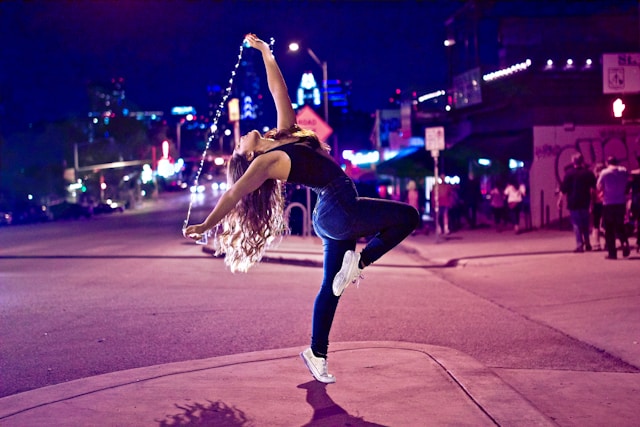

Introduction
Dance, as an art form, has continuously evolved, reflecting the cultural, social, and artistic changes of the times. From the rigid structure of classical ballet to the free-form expression of contemporary dance, each style has contributed to the rich tapestry of dance history.
Classical Ballet
Classical ballet, originating in the Italian Renaissance courts and later formalized in France and Russia, is characterized by its strict technique, graceful movements, and precise formations. Ballet dancers undergo rigorous training to master techniques like pointe work, turnouts, and fluid body movements. Iconic ballets like “Swan Lake” and “The Nutcracker” showcase the discipline and beauty of classical ballet.
“Ballet is the foundation of all dance forms. It instills discipline, strength, and a deep understanding of the body’s capabilities,” says renowned ballet instructor Emma Blackwood.
The Emergence of Modern Dance
In the early 20th century, modern dance emerged as a rebellion against the rigid constraints of ballet. Pioneers like Isadora Duncan, Martha Graham, and Merce Cunningham sought to express deeper emotions and social themes through more natural and spontaneous movements. Modern dance emphasizes freedom of expression, fluidity, and the use of the entire body in choreography.
Martha Graham once said, “Dance is the hidden language of the soul,” capturing the essence of modern dance’s emphasis on personal and emotional expression.
Jazz and Tap Dance
Jazz and tap dance, with roots in African American culture, brought a new level of energy and rhythm to the dance world. Jazz dance evolved from the jazz music scene of the early 20th century, incorporating elements of African dance, ballet, and modern dance. It’s known for its sharp movements, syncopated rhythms, and improvisational style.
Tap dance, characterized by its rhythmic footwork and percussive sounds, gained popularity through vaudeville and Broadway performances. Icons like Fred Astaire and Gene Kelly brought tap dance to the mainstream, showcasing its blend of athleticism and artistry.
The Hip-Hop Revolution
Hip-hop dance, born in the streets of New York City in the 1970s, revolutionized the dance scene with its raw energy and innovative movements. Styles such as breaking, locking, and popping are foundational to hip-hop, each with its unique techniques and cultural significance. Hip-hop dance emphasizes creativity, individuality, and connection to the music.
“Hip-hop is more than just a dance style; it’s a cultural movement,” explains dancer and choreographer Lisa Lopez. “It brings communities together and allows for personal expression in a powerful way.”
Contemporary Dance
Contemporary dance, developed in the mid-20th century, draws from ballet, modern, and jazz dance techniques. It focuses on versatility, improvisation, and the exploration of abstract concepts. Contemporary dance often incorporates elements of floor work, fall and recovery, and fluidity of movement.
“Contemporary dance allows for the fusion of different styles, creating a unique form of expression that resonates with today’s audiences,” says choreographer Michael Stone.
The Influence of Technology
The advent of technology has further transformed the dance landscape. Digital platforms and social media have made dance more accessible, allowing dancers to share their work globally and connect with broader audiences. Virtual reality and motion capture technology are being used to create innovative dance experiences, pushing the boundaries of traditional performance.
Technology also plays a role in preserving dance history. Online archives and streaming services allow people to access historic performances and learn from past masters. This digital preservation ensures that the evolution of dance continues to inspire future generations.
Dance and Cultural Identity
Dance has always been a vital form of cultural expression, reflecting the traditions, values, and identities of communities worldwide. Traditional folk dances, such as the Irish jig, Indian Bharatanatyam, and Argentine tango, continue to be practiced and celebrated, preserving cultural heritage and fostering a sense of belonging.
These traditional forms often influence contemporary dance, leading to the creation of new styles that blend old and new, local and global. This fusion of styles enriches the dance world, creating a diverse and dynamic art form.
The evolution of dance styles from classical ballet to contemporary movements showcases the adaptability and creativity of dance as an art form. Each style reflects the cultural and social context of its time, contributing to the rich and diverse world of dance. As dance continues to evolve, it remains a powerful means of expression, connecting people across cultures and generations.
According to https://www.casinopointcz.com/vklad-200-kc/ “In many ways, the evolution of dance mirrors the evolution of society itself, constantly adapting and innovating,” remarks an industry expert. “It’s a testament to the enduring power of dance to inspire, communicate, and bring joy.”
By exploring and embracing the various styles and influences that have shaped dance, we can appreciate its history and look forward to its future, where technology, tradition, and innovation continue to intersect and inspire.